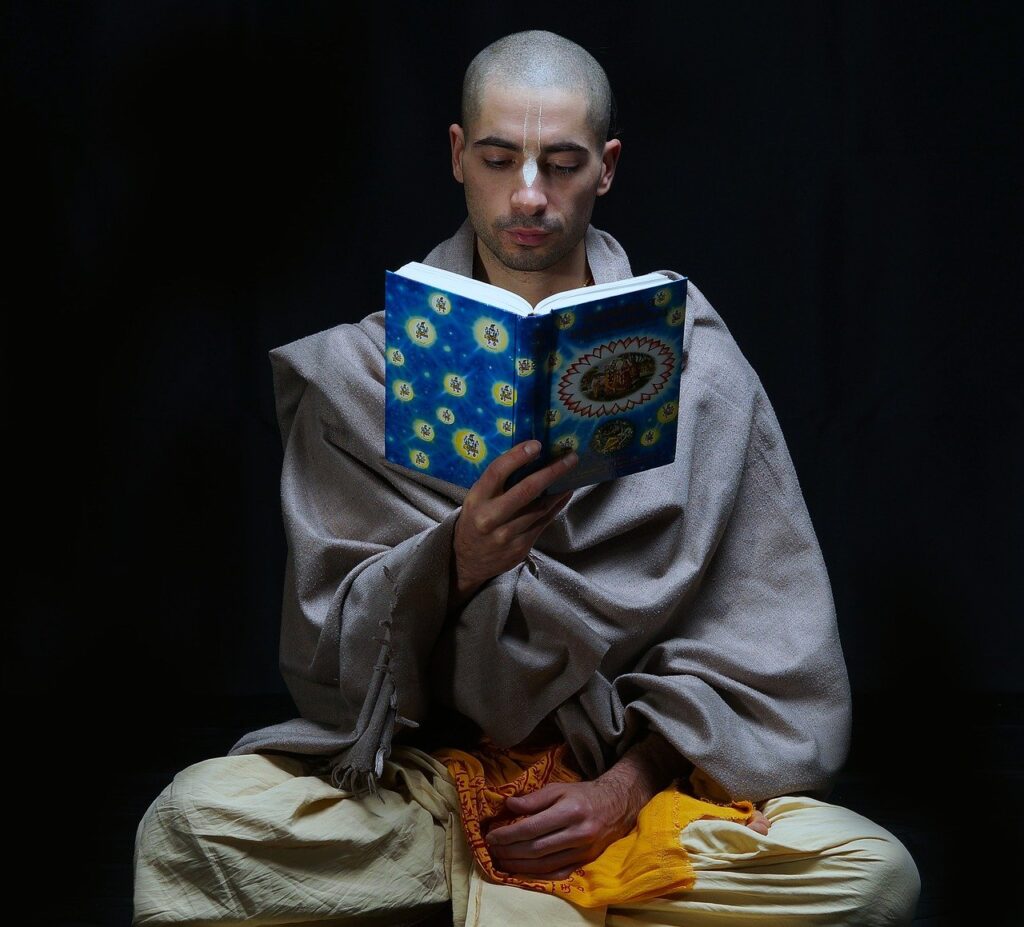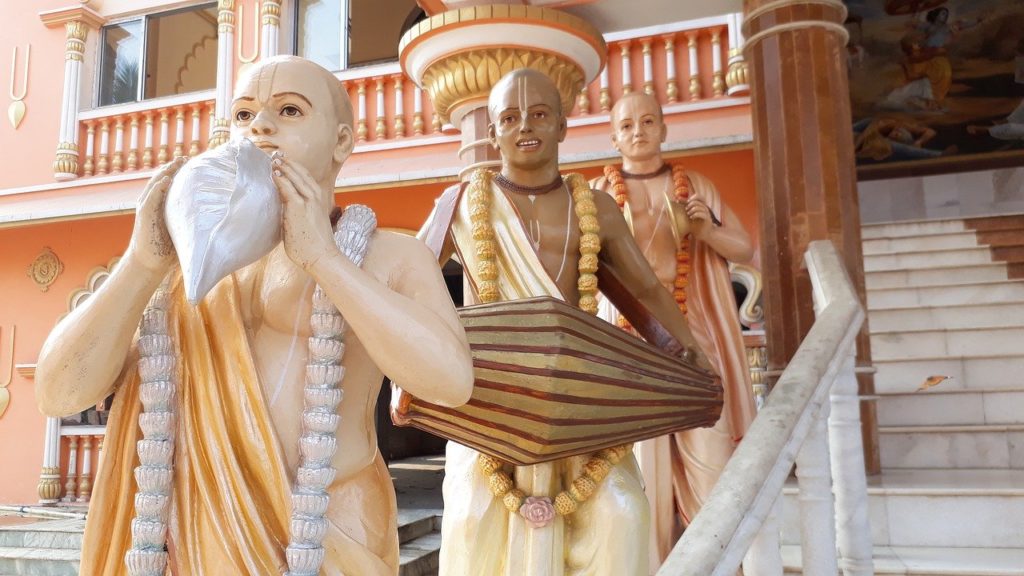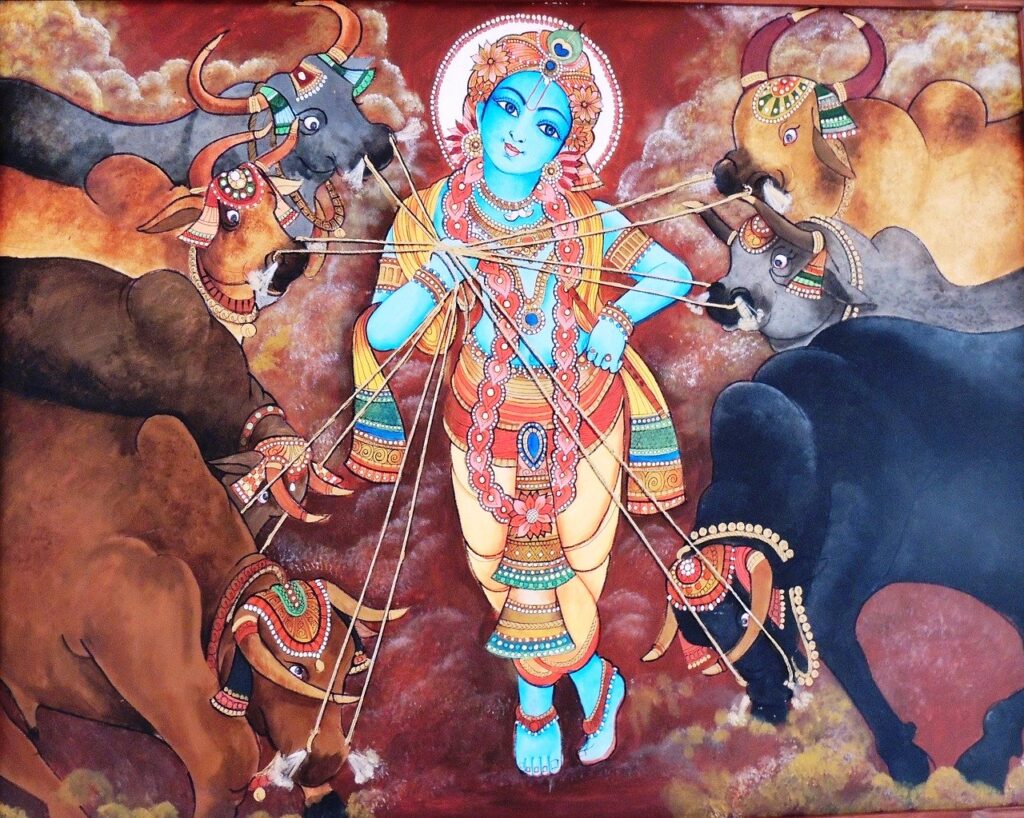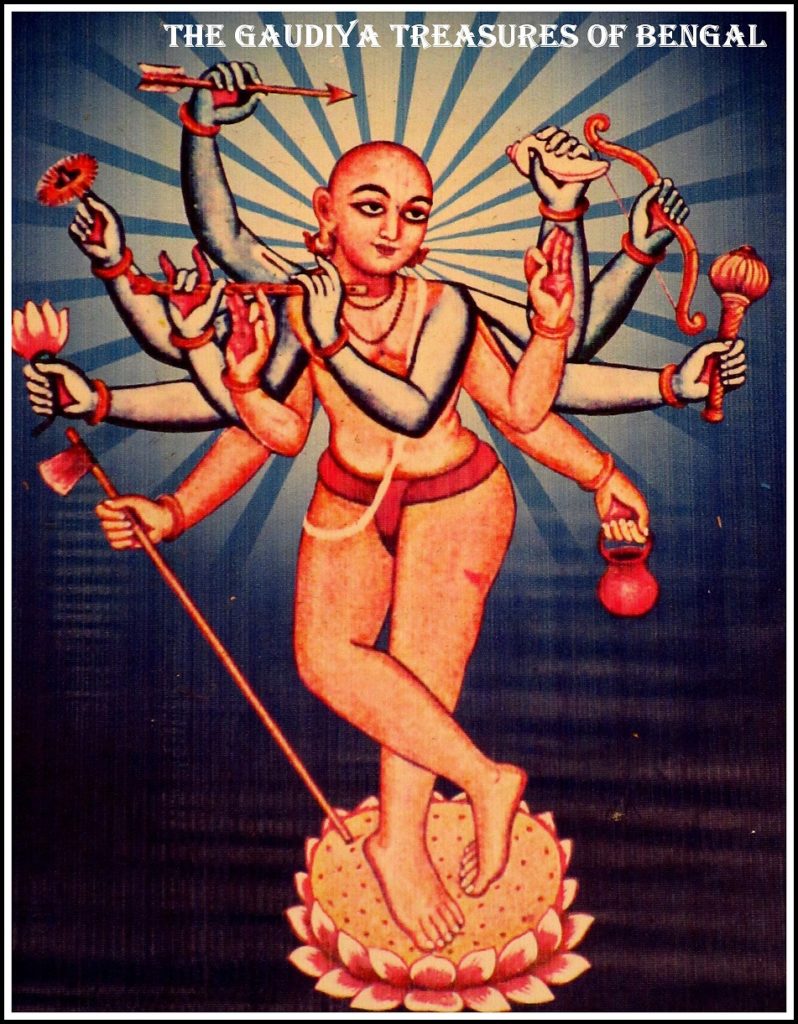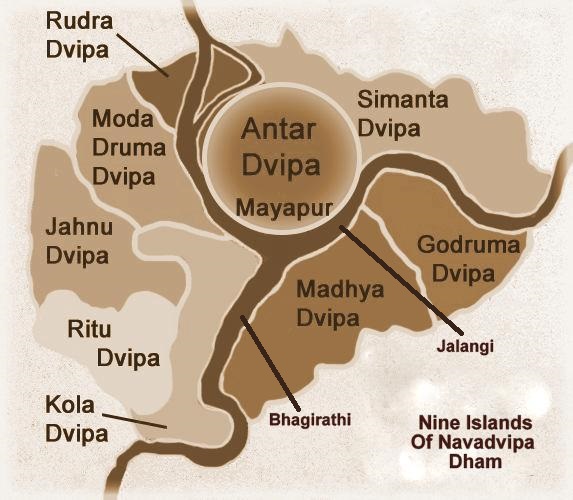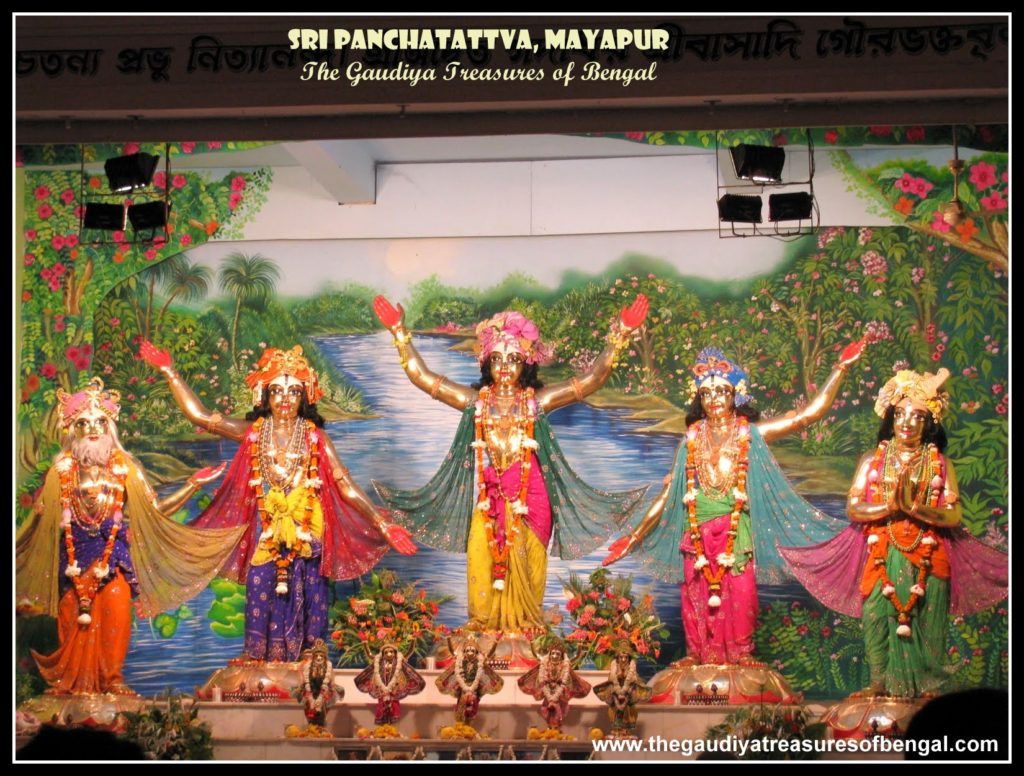The Bhagavad Gita appears as an episode of Mahabharata, the great Sanskrit epic portraying the history of the ancient world. Bhagavad Gita was spoken by Lord Krishna to Arjuna about 5000 years ago at the onset of the great war of Kurukshetra and their discussion is considered to be one of the most celebrated philosophical and religious dialogues known to man. The following article presents the summary and the ten essential teachings of the Bhagavad Gita. Relevant Slokas from the Bhagavad Gita have been cited below to help explain each of these ten principles.

#1 Proof that Krishna is the Supreme Lord | Determining one’s own duty
pitaham asya jagato
mata dhata pitamahah
vedyam pavitram omkara
rk sama yajur eva ca
(Bhagavad Gita 9.17)
–
I (Krishna) am the father of this world, the mother, the support, and the grandfather. I am the object of knowledge, the purifier, and the syllable om. I am also the Rig, Sama, and the Yajur Vedas.
tasmac chastram pramanam te
karyakarya-vyavasthitau
jnatva sastra-vidhanoktam
karma kartum iharhasi
(Bhagavad Gita 16.24)
–
One should know what is duty and what is not duty from the regulations of the scriptures. Knowing such rules and regulations, one should act so that he may gradually be elevated.
#2 Krishna Tattva – The truth about Krishna
mattah parataram nanyat
kinchid asti dhananjaya
mayi sarvam idam protam
sutre mani gana iva
(Bhagavad Gita 7.7)
–
O conqueror of wealth (Arjuna), there is no Truth superior to Me (Krishna). Everything rests on Me, as pearls are strung on a thread.
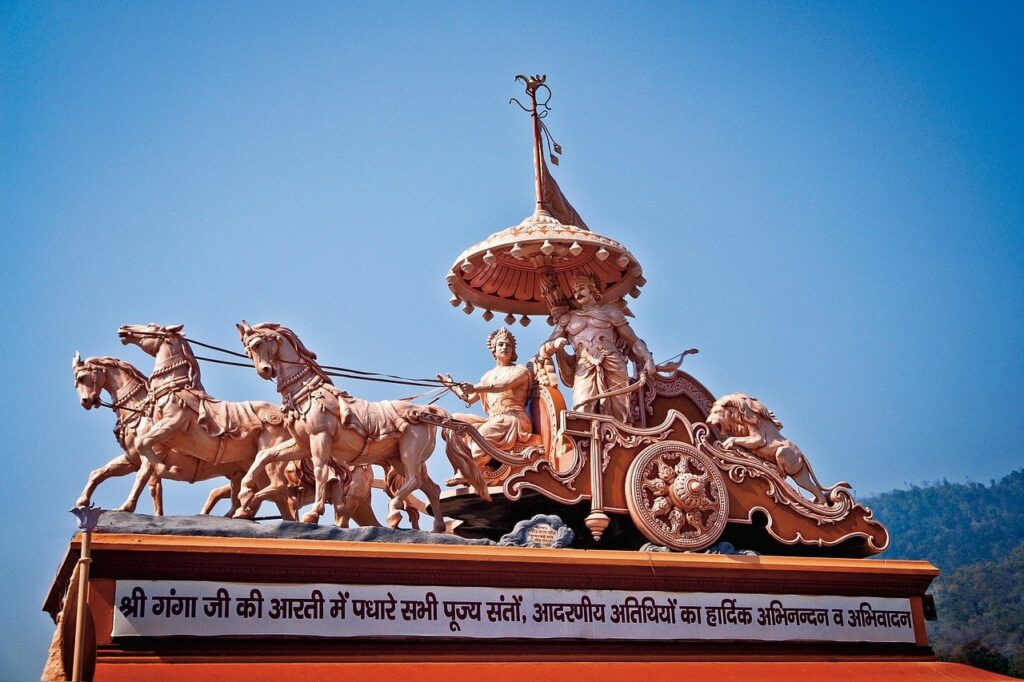
#3 Krishna Shakti – Krishna’s opulence and His various energies
bhumir apo ‘nalo vayuh
kham mano buddhir eva ca
ahankar itiyam me
bhhinna prakritir astadha
(Bhagavad Gita 7.4)
–
Earth, water, fire, air, ether, mind, intelligence, and false ego – together these eight comprise My separate material energies.
apareyam itas tv anyam
prakritim viddhi me param
jiva bhutam mahabaho
yayedam dharyate jagat
(Bhagavad Gita – 7.5)
–
O mighty-armed Arjuna, besides these there is a superior energy of Mine, which encompasses all living entities (jiva) that are exploiting the resources of the inferior material nature.
etad-yonini bhutani
sarvanity upadharaya
aham kritsnasya jagatah
prabhavah pralayas tatha
(Bhagavad Gita 7.6)
–
Of all that is material and all that is spiritual in this world, know for certain that I am both its source and dissolution.
#4 Non-devotees and the Impersonalists are deluded by Krishna
avyaktam vyaktim apannam
manyante mam abuddhayah
param bhavaam ajananto
mamavyayam anuttamam
(Bhagavad Gita 7.24)
–
Unintelligent men, who do not understand Me perfectly, believe that I, the Supreme Personality of Godhead (Krishna), was formless before and have now assumed this personality. Due to their small knowledge, they do not know of My higher nature, which is imperishable and supreme.
avajananti mam mudha
manusim tanum ashritam
param bhavam ajananto
mama bhuta maheshvaram
(Bhagavad Gita 9.11)
–
Fools deride Me when I descend in the human form. They do not know My transcendental nature, and My supreme Lordship over all that be.

#5 Jivas – The living entities
Mamai vamso jiva-loke
jiva-bhutah sanatanah
Manah sasthhanindriyani
Prakirti sthani karsati
(Bhagavad Gita 15.7)
–
The living entities in this material world are My eternal, fragmental parts. Due to their conditioned life, they are struggling very hard with the six senses, including the mind.
#6 Baddha jiva – The conditioned souls
shariram yad avapnoti
yac capy utkramatiswarah
grihitvaitani samyati
vayur gandhan ivasayat
(Bhagavad Gita 15.8)
–
The living entity in the material world carries his different conceptions of life from one body to the other, as the air carries aromas. Thus he accepts one kind of body and again quits it to take another.
na mam duskritino mudhah
prapadyante naradhamah
mayayapahrta-jnana
asuram bhavam asritah
(Bhagavad Gita 7.15)
–
Those miscreants who are exceedingly foolish, who are lowest among humankind, whose knowledge is stolen by illusion, and who partake of the atheistic nature of demons do not surrender unto Me.
#7 Mukta Jiva – The Liberated souls
mam upetya punaar janma
duhkhalayam asasvatam
napnuvanti mahatmanah
samsiddhhim paramam gatah
(Bhagavad Gita 8.15)
–
After attaining Me, the exalted souls, who are yogis in devotion, never return to this temporary mortal world, which is full of miseries, because they have attained the greatest perfection.
daivi hy esa gunamayi
mama maya duratyaya
mam eva ye prapadyante
mayam etam taranti te
(Bhagavad Gita 7.14)
–
This divine energy of Mine, consisting of the three modes of material nature (maya), is difficult to surmount. But those who have surrendered unto Me can easily cross beyond it.
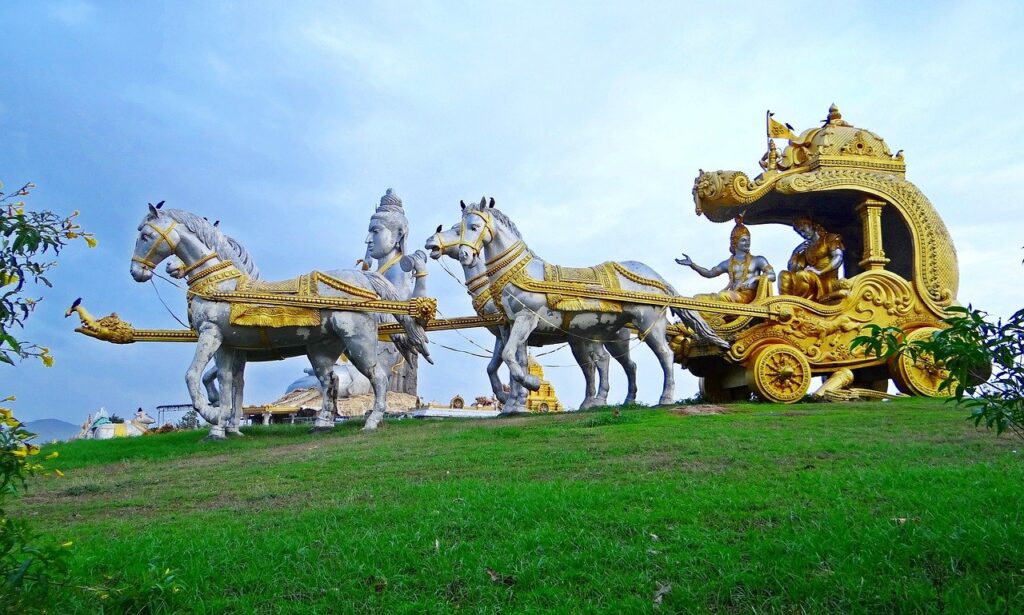
#8 The relationship between Jiva (living entity), Krishna (Isvara), and Maya (illusory potency of the Lord)
maya tatam idaam sarvam
jagad avyakta murtina
matsthani sarva bhutani
na caham tesv avasthitah
(Bhagavad Gita 9.4)
–
By Me, in My unmanifested form, this entire cosmic manifestation is pervaded. All beings are in Me, but I am not in them.
na ca matsthani bhutani
pasya me yogam aishvaram
bhuta-bhrn na ca bhutastho
mamatma bhuta-bhavanah
(Bhagavad Gita 9.5)
–
And yet everything that is created does not rest in Me. Behold My inconceivable mystic power! Although I am the sustainer of all living entities, and although I am everywhere, yet I am not a part of this cosmic manifestation, for Myself is the very source of creation.
#9 Abhidheya – Process of attaining the Supreme Lord
mahatmanas tu mam partha
daivim prakritim asritah
bhajanty ananya-manaso
jnatva bhutadim avyayam
(Bhagavad Gita 9.13)
–
O son of Prtha, those exalted souls, who are not deluded, are under the protection of My divine nature. They are whole-heartedly engaged in My devotional service knowing Me to be the Supreme Personality of Godhead, original and inexhaustible.
satatam kirtayanto mam
yatantas ca dridha-vratah
namasyantas ca mam bhaktya
nitya-yukta upasate
(Bhagavad Gita 9.14)
–
Always chanting My glories, endeavoring with great determination, offering obeisances unto Me, these great souls are perpetually engaged in My devotion.

#10 Prayojana – Attaining the ultimate fruit of ecstatic love of God
ananyas chintayanto mam
ye janah paryupasate
tesam nityabhiyuktanam
Yoga ksemam vahamy aham
(Bhagavad Gita 9.22)
–
But those who are exclusively engaged in My devotional service, meditating on My transcendental form – to them I carry what they lack, and I preserve what they have.
samo ‘ham sarva-bhutesu
na me dvesyo ‘sti na priyah
ye bhajanti tu mam bhaktya
mayi te tesu capy aham
(Bhagavad Gita 9.29)
–
I am hateful to no one, nor am I partial to anyone. I am equally disposed to all. But whoever renders service unto Me in devotion is a friend, is in Me, and I am also a friend to him.
